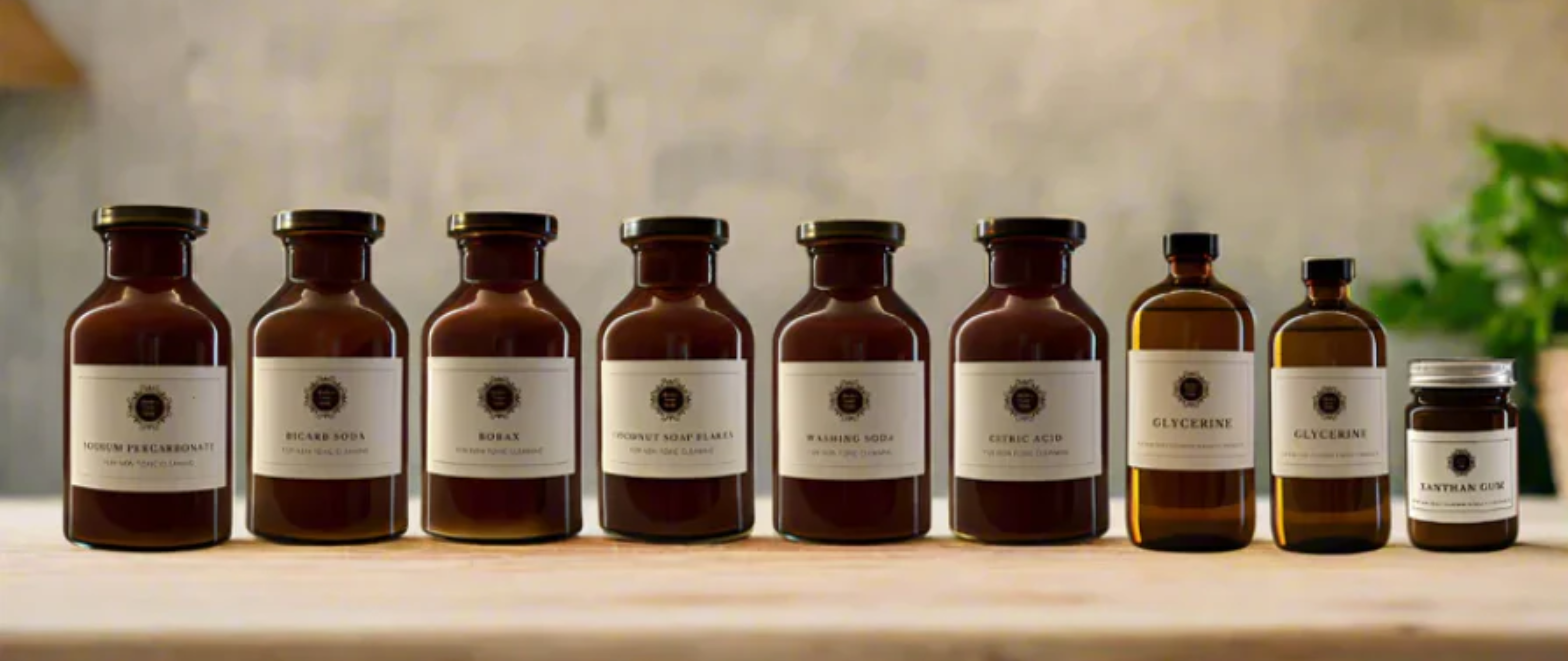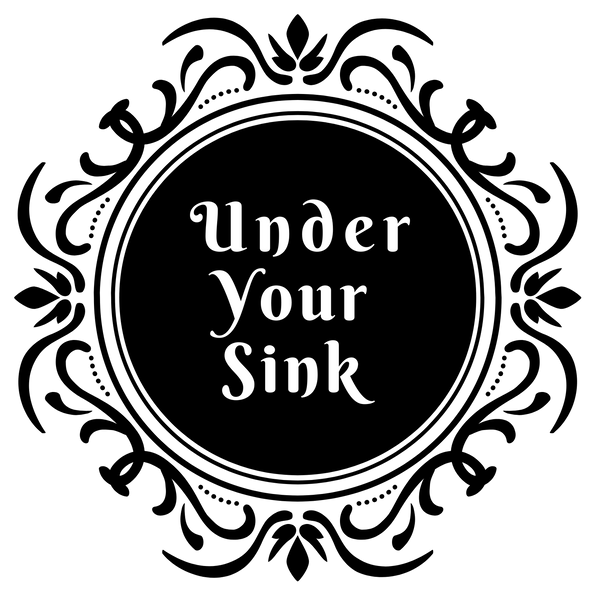
The Toolkit That Changed What’s Under My Sink
Let’s keep this simple.
You don’t need a separate spray or powder or paste for every room in the house. You need a toolkit - a handful of powerful, multi-use ingredients that can handle just about every cleaning job. That’s what I use, and it’s what I sell here at Under Your Sink.
These aren’t trendy powders wrapped in green promises. They’re real ingredients with a purpose. Each one does a specific job - lifting grime, breaking down grease, whitening, deodorising, softening, or disinfecting.
You can use them on their own, or combine them (the right way) to create DIY sprays, pastes, bombs, and powders.
So what’s in the toolkit?
Nine ingredients - each with a specific role, a known chemical profile, and a clear purpose. They are also all eco-friendly, biodegradable, fragrance free, filler free, vegan friendly oh and plastic free too!
Let’s break them down:
🧪 1. Sodium Percarbonate (Oxybleach)
This powder releases oxygen when dissolved in water, making it a safe and powerful alternative to chlorine bleach. Use it to whiten laundry, disinfect surfaces, soak stained fabrics, degrease dishes, and brighten everything from tea towels to grout. It’s one of the most versatile cleaners I use. P.S it's the key ingredient in Napisan and laundry soakers!
🧪 2. Washing Soda (Sodium Carbonate)
This is the strongest of the alkaline powders in your toolkit. It cuts through grease, grime, and soap scum, softens hard water, and boosts the performance of soaps and other powders. If you’re making laundry wash or tackling something seriously dirty, this is your base. You will find this in almost all heavy duty commercial cleaning products - however to guarantee a natural version (as opposed to synthetic) DIY is really the only way!
🧪 3. Borax (Sodium Tetraborate)
Borax sits between bicarb and washing soda in terms of strength. It deodorises, softens water and has mild antibacterial qualities. Its unique chemistry also makes it useful in recipes like laundry wash as it has lots hydrogen atoms. It can also be used in a foot soak and to make kids slime!
🧪 4. Bicarb (Sodium Bicarbonate)
Bicarb is the mildest of the three. It's still alkaline, but safe enough to use on delicate surfaces. It’s great for neutralising odours, gentle scrubbing, and for softening water. Perfect in soft pastes, carpet fresheners or as a deodoriser in the fridge.
🧪 5. Citric Acid
Citric acid is your bathroom best friend. It dissolves limescale, rust, and mineral build-up, making it ideal in toilet gels, shower sprays, and rinse aids. It also helps preserve DIY solutions and balance pH when you need a touch of acidity. Essentially this works like cleaning vinegar and perfect for bath bombs and toilet/ shower fizzles.
🧼 6. Coconut Soap Flakes (hard soap)
These flakes are pure soap - no fillers, fragrance, or additives. They dissolve easily and create lather, helping to lift dirt and oils from surfaces and fabrics. Use them in laundry powder, dish bars, or to make sprayable soap concentrates. Cn be diluted and used anywhere there is a need to clean and a much safer option than grating a soap bar for a recipe.
🧴 7. Castile Soap (liquid soap)
Castile is a concentrated liquid soap that can be diluted and used almost anywhere: as dish soap, hand wash, floor cleaner, or an all-purpose spray. It’s gentle, effective, and endlessly customisable with essential oils or your favourite scents (if you like adding them)
💧 8. Glycerine
Although not an essential in the toolkit, it is very handy to have. Essentially its a moisturiser and stabiliser, so it keeps ingredients from splitting in DIY beauty and cleaning products. . It helps retain moisture, disperses essential oils evenly, and leaves a soft feel on the skin! However, the main reason its in the toolkit as it really helps you mix xanthan gum, the lucky last ingredient.
🧪 9. Xanthan Gum
Xanthan gum is a natural thickening agent that thickens water based solutions. Note it wont thicken alcohol, only water based products. The less water content, the less it will work. This essentially creates gels, you can turn a liquid cleaning solution into a gel consistency just like the store bought stuff. Handy for dish liquid, body wash, toilet and shower gels.
Why this matters
Instead of a cupboard full of single-use bottles (that you’re not even sure are safe), you’ll have:
- Full control of what goes into your cleaners
- Ingredients that work on their own and play well together
- A serious cut to waste, cost, and confusion
This isn’t about going green for the vibe. It’s about choosing ingredients with purpose.
Getting Started with Your Toolkit
Ideally, you’ll have all nine core ingredients on hand. That gives you full flexibility to make almost any cleaner - from sprays to soaks, gels to bombs.
But if you're just getting started, you can absolutely begin small.
🔄 What to Make and What to Replace
A great starting point is to look at your most-used commercial cleaners - things like:
- Multipurpose spray
- Dishwashing tablets
- Toilet cleaner
- Laundry powder
- Window or glass spray
Now ask: which one could I replace with a DIY version?
Head over to my DIY Cleaning Recipes and filter by what you want to make. Each recipe lists exactly what you’ll need - no guesswork.
It’s perfectly fine to build your toolkit gradually. Each ingredient has multiple uses, so even one or two will get you started.
If you're in Australia and would like. a toolkit delivered to your door, explore the Eco-Bundles and DIY Ingredients collections now and shop guilt free and with a little buzz knowing you're supporting a good, ethical, super duper small business and me Analisa!
Rest of the world, these ingredients would hopefully be available in someway.. google your hearts out! Americans, you have the largest source of natural washing soda, borax and bicarb worldwide.. you guys are in luck!
Want a deeper dive?
Read The Science Behind the Green Cleaning Ingredients
Or check out the ingredient breakdowns here
